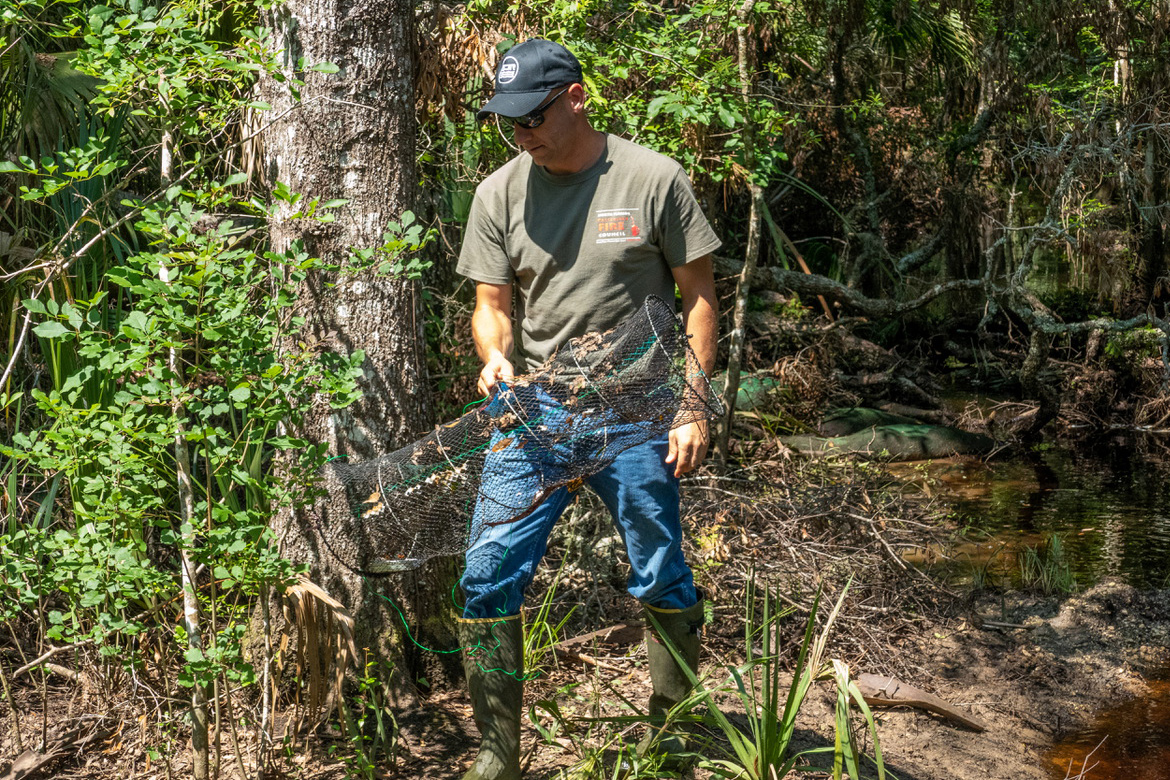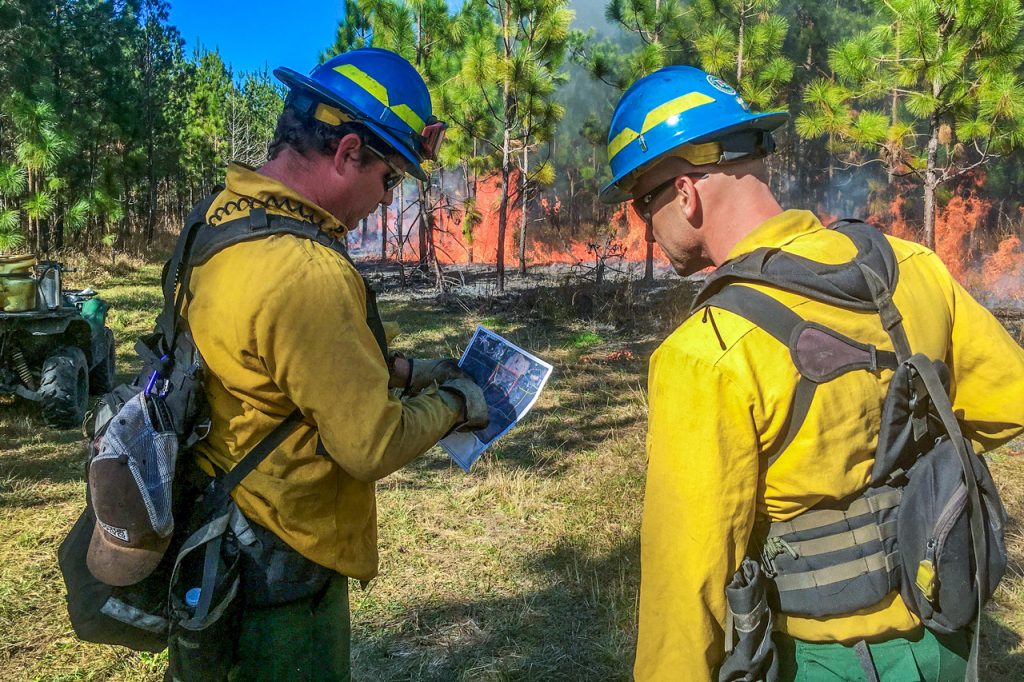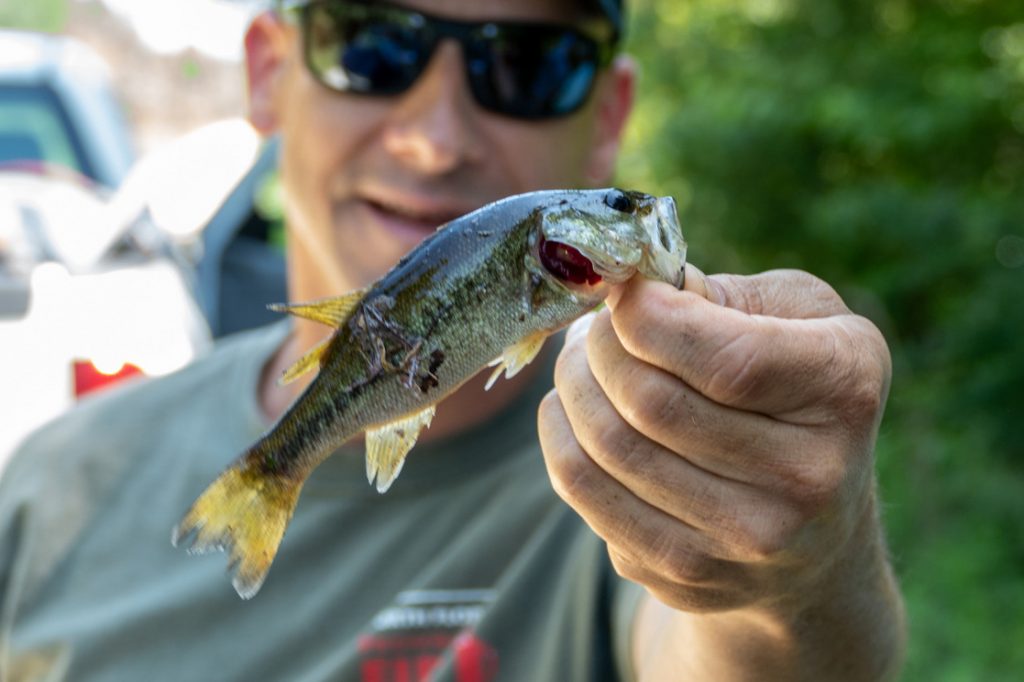Jeremy Olson
Childhood visits to district land helped foster land manager’s future career

Jeremy Olson removes a trap from a creek to see what creatures live in the waterway.
It’s fair to say that destiny, in an indirect way, led Jeremy Olson to a career at the St. Johns River Water Management District.
“When I was little I always gravitated toward nature,” says Olson, the district’s land management program manager and the former land manager responsible for managing more than 30,000 acres in Alachua, Putnam and Marion counties. “My childhood home was adjacent to the Wekiva River Buffer Conservation Area which, coincidentally, is a district-owned property.”
It was obvious to Olson’s parents that the natural world would play a dominant role in his life and career, so they nurtured his passions by buying him bug boxes, aquariums and field identification guides and let him roam the forests in muddy pursuit of snakes and creepy crawlies.
“As I got older, my parents pushed me to connect with mentors and pursue a wildlife ecology degree,” he notes.
Olson joined the district in 2012, following a seven-year stint with the Florida Fish and Wildlife Conservation Commission in Osceola County.
“Several of the properties I helped manage were owned by SJRWMD, so I met many district employees and was impressed with the agency’s mission and culture of empowerment,” he says. “When a district job was advertised in Gainesville I jumped at the chance.”
There are no typical days for Olson, and he isn’t complaining. One day may find him planning and implementing prescribed fires; on another, he’s restoring altered habitat or responding to emergencies, such as wildfires or hurricanes. The biggest challenge, he says, is not becoming overwhelmed with the volume of work or the job’s ever-changing dynamics.
“I think my friends get tired of hearing about how much I enjoy my job,” he says. “We use helicopters, airboats and horses to ignite prescribed fires. We work closely with law enforcement to catch poachers. We help facilitate outdoor events that encourage youth and disabled veterans to enjoy the properties we manage.”
There are also more subtle, slow-simmering rewards in being a land manager, Olson adds.
“Beyond the experiences that are instantly exciting, there are long-term projects that are exhilarating in a more nuanced way,” he says. “We are nudging ecosystems into a healthier state, a process that can take decades to accomplish. “
Olson says public access to the district’s diverse properties is critical.
“I’m proud of the district’s stance on public use,” he says. “I smile every time I see a little kid’s footprints in the mud or sand on one of our properties. It takes me back to when I was a kid exploring the Wekiva River Buffer Conservation Area and is reassuring to know the passion I have for nature is alive and well in the next generation.”
Top: Part of the job of a land manager includes planning and participating in conducting prescribed fires. Jeremy Olson, right, reviews a fire map.
Bottom: Land Management Program Manager Jeremy Olson was part of a team of district scientists and lands specialists who surveyed Silver Springs Forest Conservation Area to identify the plants and animals found there to write a land management plan specific to the property.



